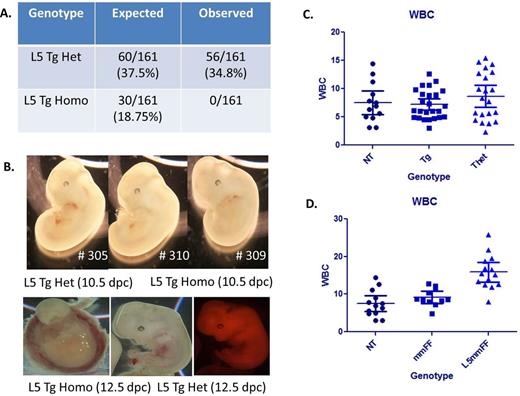Abstract
Juvenile Myelomonocytic Leukemia (JMML) is a mixed myeloproliferative/myelodysplastic disease that is rapidly fatal with infiltration of myeloid cells into multiple organs. About 15% of JMML patient samples contain a mutation in c-Cbl, and germline mutation results in the predisposition for developing JMML. The c-Cbl gene encodes a multifunctional adaptor protein that contains an N-terminal tyrosine-kinase binding (TKB) domain, a RING finger motif that contains E3 ligase activity, and a C-terminal ubiquitin-associated domain. The TKB domain is involved in adaptor functions of the protein, whereas the ubiquitin ligase domain results in mono-ubiquitination of receptors which promotes lysosomal mediated degradation of activated receptors. Interestingly, a hotspot for mutations at residue 371 exists in JMML patients, where 1/3 of the detected mutations are a tyrosine to histidine substitution, Y371H. This residue belongs in the linker region of the CBL protein, and it was previously observed that Tyr-371 plays key roles in activating the ubiquitin ligase activity of the protein. In vitro, CblY371H mutation does indeed destroy its ligase function, resulting in prolonged signaling through the Ras pathway only when the endogenous c-Cbl gene is silenced. How mutant Cbl gives rise to JMML, however, and how it acts in concert with other genes in the pathogenesis of JMML requires further study.
To address these questions, we overexpressed the oncogenic CblY371H mutation using transgenic mice. As expected, overexpression of CblY371H by itself in wildtype mice had no apparent phenotype. Therefore, Cbl transgenic mice were bred to Cbl heterozygous knockout mice (Cbl+/-) followed by further breeding in an attempt to generate Cbl transgenic mice with the endogenous Cbl gene inactivated (CblY371H; Cbl-/-). Surprisingly, unlike Cbl null mice, which are viable, overexpression of mutant Cbl allele in Cbl null mice caused embryonic lethality between 11.5 dpc and 12.5 dpc. In order to circumvent the developmental effects of expressing the mutant Cbl protein, we used a conditional Cbl knockout mouse to tissue specifically delete the endogenous Cbl gene. We chose the MMTV-Cre strain, which expresses Cre recombinase in only 10% of hematopoietic stem cells (CD34-; Lin-; Sca-1+; c-Kit+). With subsequent breeding with the CblY371H transgenic mice, we were able to bypass the embryonic lethality and produce mice with the correct genotype (MMTV-Cre;CblY371H;Cblfl/fl). These mice look normal but develop significant leukocytosis and show GM-CSF hypersensitivity even though only 10% of hematopoietic stem cells are affected. These mice, however, appear unaffected by the leukocytosis, and show no obvious difference with its littermates up to one year of age. We conclude that mutant CblY371H by itself is not sufficient for the development of JMML in this model and requires additional cooperating events. Whether further aging of these mice will result in JMML remains to be seen.
In conclusion, we have developed a mouse model overexpressing the CblY371H protein ubiquitously, which causes deleterious development when it is the only c-Cbl protein available. This confirms the important role of c-Cbl activity during development. In hematopoietic cells, the overexpression of CblY371H results in leukocytosis and GM-CSF hypersensitivity when the endogenous gene is inactivated. We are currently investigating the cooperating events that are required for the development of JMML in this mouse model.
Phenotype of CblY371H Transgenic Mice A and B.Embryonic lethality of Cbl transgenic mice. The embryos look normal on day 10 of development but by day 12.5, no homozygous embryos are found. C and D. There is significant leukocytosis when the CblY371H transgene is combined with inactivation of the endogenous gene only in hematopoietic stem cells using the MMTV Cre.
Phenotype of CblY371H Transgenic Mice A and B.Embryonic lethality of Cbl transgenic mice. The embryos look normal on day 10 of development but by day 12.5, no homozygous embryos are found. C and D. There is significant leukocytosis when the CblY371H transgene is combined with inactivation of the endogenous gene only in hematopoietic stem cells using the MMTV Cre.
GM-CSF Hypersensitivity of Bone Marrow Cells from Triple Transgenic Mice A.Western Blot of bone marrow cells stimulated with GM-CSF. Panel A shows time course after stimulation of bone marrow cells from conditional Cbl mice (Cblfl/fl) that have the endogenous Cbl gene deleted using the MMTV-Cre transgene. B-D.Quantitation of several blots showing GM-CSF hypersensitivity. When normalized to the nontransgenic mice at time point zero, there is increased activity of downstream signaling pathways with and without GM-CSF.
GM-CSF Hypersensitivity of Bone Marrow Cells from Triple Transgenic Mice A.Western Blot of bone marrow cells stimulated with GM-CSF. Panel A shows time course after stimulation of bone marrow cells from conditional Cbl mice (Cblfl/fl) that have the endogenous Cbl gene deleted using the MMTV-Cre transgene. B-D.Quantitation of several blots showing GM-CSF hypersensitivity. When normalized to the nontransgenic mice at time point zero, there is increased activity of downstream signaling pathways with and without GM-CSF.
No relevant conflicts of interest to declare.
Author notes
Asterisk with author names denotes non-ASH members.



This feature is available to Subscribers Only
Sign In or Create an Account Close Modal